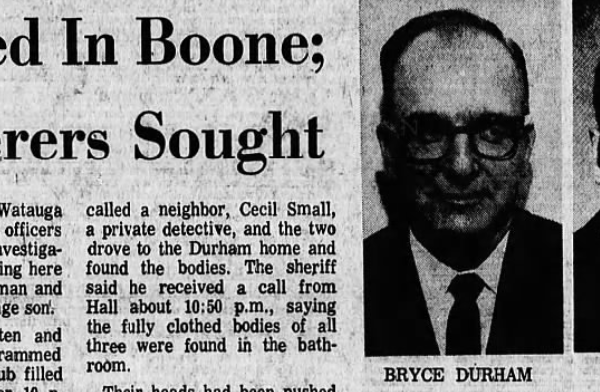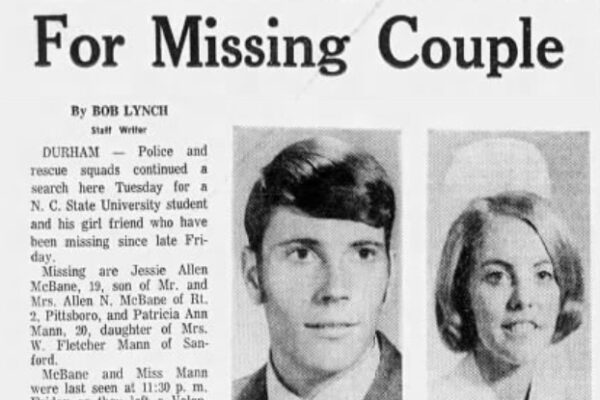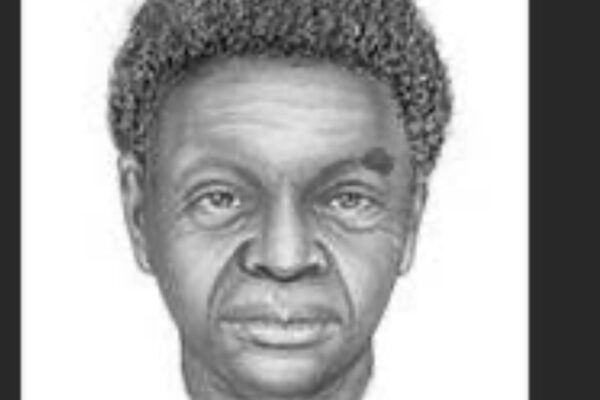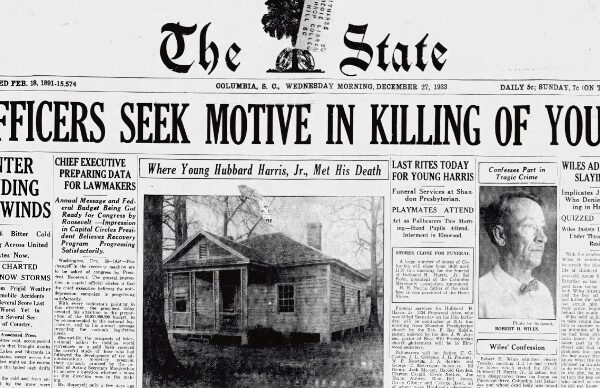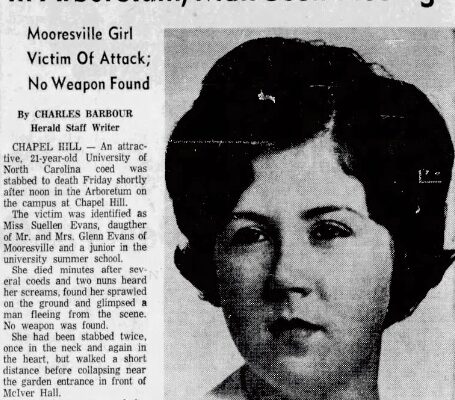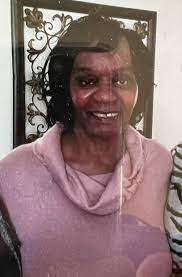It’s no secret that children and young people are a vulnerable sector of the population when it comes to crime and missing persons cases. We’ve profiled several different children on “Missing in the Carolinas.” In fact, this week there was news related to the case of Madalina Cojocari, an 11-year-old girl who went missing from my community in November of 2022. I talked about Madalina’s disappearance in Episode 52: Not Reported Missing.
Madalina Cojocari Update
As a quick recap, it was a guidance counselor at Madalina’s elementary school that first became concerned about Madalina’s absence from school and attempted to visit the girl’s home. When no one answered the door, the counselor called her mother, Diana Cojocari, and asked that she bring Madalina into the school. But when she arrived, the girl wasn’t with her. Police interviewed her at the school on December 15, and that is when they realized Madalina had last been seen, allegedly by her mother, on November 23, 2022. The last known time she was in school was November 21. Diana told police she didn’t report her daughter missing because she was worried it would cause a conflict with her husband, Christopher Palmiter, who was Madalina’s stepfather. Both he and Diana were soon arrested for “failure to report a missing child.” Police learned that right around Madalina’s disappearance, Palmiter drove to a family home in Michigan to pick up some items. He later told them he hadn’t seen Madalina for a week prior to that visit. Both Diana and Christopher accused one another of hiding Madalina.
Earlier this week, her mother Diana pleaded guilty to the charge of “failure to report a missing child. She was sentenced to 6-7 months in prison. Because she has already spent the maximum amount of time in jail for this charge, she was released on May 20 after being behind bars for 520 days. She will likely be deported back to her native country of Moldova, because she has been living in the United States on a green card.
Madalina’s stepfather Christopher Palmiter pleaded not guilty to the charge of failure to report the disappearance of a child, and jury selection began for his trial just this week. His defense team has said they sent a subpoena to Diana Cojocari requiring that she testify in the trial.
Madalina Cojocari remains missing, and her parents have provided no further information to the authorities. She was last seen wearing jeans, pink, purple and white Adidas shoes, and a white T-shirt and jacket. She is 4 feet, 10 inches, has dark brown hair and weighs about 90 pounds.
Officers ask anyone with information on Madalina’s whereabouts to call the Cornelius Police Department at 704-892-7773 or the FBI at 1-800-CALL FBI. To remain anonymous, call North Mecklenburg Crime Stoppers at 704-896-7867.
Timeka Pridgeon
Like Madalina Cojocari, a teenage girl named Timeka Pridgeon also disappeared from her home. We featured her case on Episode 32: Missing Teen Girls in North Carolina. Timeka went missing from La Grange, North Carolina on May 13, 2001. According to her mother, Cosandra Best, she dozed off while waiting for a visit from her boyfriend. She had last seen her 16-year-old daughter around 10:30 p.m. that night. When she woke up, her daughter was gone, but her shoes and purse were left behind. A friend told her later she had been talking to Timeka on the phone when the teenager said someone was knocking on the door and she had to go. Cosandra later learned the boyfriend she had been waiting for had previously been convicted of a sex crime, kidnapping, assault, and theft. The police theorized he might have seen an opportunity to abduct Timeka while her mother was asleep, but Timeka has never been found and there is no evidence to support his guilt. In 2006, this suspect was convicted of a sex crime that occurred after Timeka disappeared, and he has since been released from prison. At the time of her disappearance in 2001, Timeka Pridgen stood five feet seven inches tall and weighed 165 pounds. She is black with brown hair with blonde highlights and brown eyes. Anyone with information is asked to call the La Grange Police Department at 252.527.5117.
Rick Travis
On the other side of the age spectrum, the elderly and those living with dementia or other cognitive impairments are also at a high risk to go missing. Rick Travis, a 66-year-old man from Spencer, North Carolina was profiled in Episode 18: Missing Runners in North Carolina. He had been a lifelong avid runner with 31 marathons under his belt when he went missing while out for a run on February 11, 2019. Prior to his disappearance he had been diagnosed with a mild cognitive dysfunction memory loss, but he was determined to try and stick with his usual routine. His wife grew concerned when he didn’t return home from his run that evening, especially with the temperatures dropping, and alerted the authorities. While a Silver Alert was activated for Rick, he wasn’t found almost a year later, near the Yadkin River, near where he had last been seen running along U.S. 29 and Interstate 85. Authorities believe he became disoriented during his run and either suffered a medical emergency or died from exposure.
Heddie Dawkins
In Episode 73, which I produced for Alzheimer’s Disease Awareness Month, featured the story of 81-year-old Heddie Dawkins, who went missing from her daughter’s home in High Point on August 24, 2022. Reading Heddie’s story struck a chord with me, because my mother is currently helping care for her elderly parents who still live on their own. My grandfather has Alzheimer’s Disease, and making sure he remains safe and doesn’t try to leave the property on his own has become a full-time job. Heddie left the home in the middle of the night, which is something people with dementia are at risk to do. What is heartbreaking about Heddie’s case is how the community worked tirelessly to find her and bring her home, but she was found deceased not far from the neighborhood she disappeared from, despite the best efforts from authorities and friends and family.
Jamie Fraley
People living with an intellectual or physical disability are also at a higher risk for going missing. The unsolved disappearance of Jamie Fraley from Gastonia, North Carolina is a prime example of this scenario. I talked about Jamie on Episode 23: North Carolina Cases Featured on “Disappeared.” Jamie was 22 when she went missing and had been living with bipolar disorder and anxiety much of her life. She was attending living in an apartment and attending classes at Gaston Community College when she got engaged to a man named Ricky Simonds Junior. Unfortunately, Ricky was arrested and charged with theft. While he was serving time for that, Jamie lived alone in their apartment. Because of her disability, she did not drive, so her fiance’s father, Ricky Simonds Senior, would often take her around town to run errands. He lived in the same apartment complex. Unfortunately, much like Timeka Pridgeon, Jamie did not know someone connected to her fiancé had a criminal past. Ricky Simonds Senior had been been convicted of murdering a former girlfriend and served six years in prison for it. On the night of April 8, 2008, Jamie called her mother Kim while battling a stomach virus. She had already been to the emergency room two different times the previous 24 hours and wasn’t having any relief from her symptoms. Her mother offered to pick her up, but Jamie told her she wanted to stay home and keep an important appointment the next day.
But the next day, Kim received a call from a healthcare worker that was supposed to drive Jamie to that appointment. She reported that Jamie wasn’t answering the door and that was unusual. When Jamie’s mother entered the apartment, she found her daughter’s wallet, purse, keys, ID, and several areas around the home where Jamie had vomited. Jamie Fraley was a petite young woman who was less than five feet tall and weighed around 90 pounds, so she could not have gotten far on her own while that ill. Police were called in and learned Jamie had been talking to a friend on the phone around 2 a.m. She told that friend she had another friend coming to take her to the hospital and indicated that it was a male. She got off the phone because the man arrived at her apartment, but didn’t specify who the friend was. Her cell phone was later found in the grass along the road not far from her residence.
When the police interviewed Ricky Simonds Senior, he was cagey and denied any involvement. But they learned he had been stalking an ex-girlfriend, and that woman told police he was so violent she’d had to take out a restraining order against him. Jamie’s story has never been solved, mostly in part because Ricky Simonds Senior suddenly passed away just a few months after she went missing. It appeared he had tried to hide in the car of his ex-girlfriend so he could abduct and possibly murder her, got trapped in the trunk, and died of a heatstroke. He never admitted to anyone before his death if he’d been the one to visit Jamie at her apartment that night, and his son was ruled out as a suspect because he’d been incarcerated at the time.
Martin Roberts
Unfortunately, I’ve noticed being a college student also puts a person at risk for going missing, for a variety of reasons. College is a major time of transition in a person’s life, and it can be really stressful. Episode 8: Missing College Students in the Carolinas focused on just a few of these cases. Martin Roberts, who went missing from Boone, North Carolina in April 2016, may have been struggling with personal issues at the time of his disappearance. Another student from Boone took a solo spring break road trip to the border of Texas to visit one of her childhood best friends and was never heard from again after arriving.
Jason Knapp
Jason Knapp was a 20-year-old mechanical engineering student at Clemson University when he went missing in 1998 and his disappearance never made sense to his friends and family. His car was found 30 miles away from his home, at Table Rock State Park in South Carolina, 10 days after he dropped out of sight. A receipt indicated Jason had entered the park on the afternoon of Easter Sunday in April 1998. Other receipts showed he had picked up a few items at the grocery store and eaten lunch at a Wendy’s fast food restaurant. Cash and his checkbook were still in the car.
There were no signs that he was depressed, struggling, or having problems with anyone. The one gun he owned was found back at his apartment and he had stripped the sheets on his bed as he had planned to wash them when he returned. His mother was also confused because while her son liked to mountain bike, he wasn’t a hiking enthusiast and had never mentioned going to Table Rock State Park before. An extensive search of the park turned up no signs of Jason, and eventually, in 2018, his parents requested that he be legally declared dead. Over the years people have theorized that Jason could have been the victim of foul play—perhaps someone abducted him and forced him to drive to the park or he came across a serial killer such as Gary Michael Hilton, but no one can no for sure since no other clues ever materialized.
Samantha Josephson
The abduction of a female college student in South Carolina in 2019 has helped raise awareness of how to stay safe when requesting a driver from a ride share company. In March of that year, 21-year-old University of South Carolina student Samantha Josephson disappeared from the Five Points Entertainment district after she got into a car she thought was her Uber. Samantha was a senior from New Jersey who was studying political science. She had already secured a full scholarship to the Drexel School of Law in Philadelphia after graduation from USC. Samantha was alone when she put in the request for an Uber around 2 a.m. outside a bar called Bird Dog. A bouncer who knew Samantha confirmed seeing her get into a black Chevy Impala. But when she didn’t return home that night, her roommates grew concerned. They had no idea that she had mistakenly gotten into a car that was not her Uber, and the driver, 24-year-old Nathaniel Rowland, had the childproof feature activated on the locks in the car. But by then, it was too late. A little more than 12 hours after she was last seen getting into a car outside a bar, turkey hunters discovered her body in Clarendon County, about 65 miles from where she was abducted.
Her autopsy determined Samantha died of multiple sharp force injuries, including more than 120 stab wounds.
Police viewed video surveillance footage from outside the bar that showed Samantha getting into the black 2017 Chevy Impala. When they saw the same car driving around the Five Points Area the next day, they pulled it over. The driver was Nathaniel Rowland, and he attempted to flee the scene on foot before being apprehended. Officers could see what looked like large amounts of blood on the inside of the car.
During Rowland’s trial, an analyst with the South Carolina Law Enforcement Division said footprint evidence showed Samantha had likely tried to kick her way out of the backseat window before being stabbed to death. Other evidence introduced at the trial showed Samantha and Rowland’s cell phones tracking together as the car left Columbia. While at some point, Samantha’s phone stopped being tracked, Rowland’s continued all the way to East Sumter County, where Samantha’s body was found the next day. Rowland had grown up in that area.
Rowland’s phone was also tracked to close to a Wells Fargo ATM, where someone, police assumed it was Rowland, unsuccessfully attempted to access Samantha’s account with her debit card. SLED forensics experts testified blood found on Rowland’s shoe was highly likely to be Samantha’s, and Rowland’s DNA was found underneath Samantha’s fingernails. Samantha’s blood was on the suspected murder weapon, a knife of Rowland’s. Rowland tried to sell Samantha’s iPhone in Columbia only hours after she was murdered, but the owner of the cell phone store refused to buy it because Rowland asked for too much money.
Authorities also found Samantha’s blood on cleaning supplies that had been discarded in a dumpster behind the home of Rowland’s girlfriend. She testified at the trial that she had seen blood in the backseat of the car when he drove her to work the next morning, and had seen him cleaning blood off a knife. She recognized his car on the news from the Five Points surveillance footage but said she was afraid to report him because she was scared for her and her daughter’s lives.
The jury deliberated for only an hour before returning a verdict of guilty in the kidnapping, murder and possession of a weapon during a violent crime. On July 27, 2021, a judge sentenced Nathaniel Rowland to life in prison.
At his sentencing, Rowland said the following:
“I know I’m innocent, but I guess what I know and what I think really doesn’t matter,” Rowland said. “I just wish the state would have done more in finding out who the actual person was instead of being satisfied with detaining me and proving my guilt.”
The judge was not convinced. He told Rowland, “The evidence is so substantial in this case pointing to your guilt, and I emphasize it and reemphasize it because of the horrific and most brutal nature this crime. It could not be worse. It’s the most severe murder that has occurred, that I have been a witness to as far as presiding in court or participate in as a lawyer. And for whomever asks me for leniency, that’s not part of my DNA.”
I’m still not clear on whether or not Nathaniel Rowland was attempting to impersonate a ride share driver that night or if he simply saw an opportunity to abduct and rob a vulnerable young woman when she accidentally got into his car. Whatever the case, what he did to Samantha Josephson was senseless and cruel and she tried her hardest to escape him before the murder.
On January 5, 2023 an act named “Sami’s Law” was signed by President Joe Biden. This act requires the Government Accountability Office to submit a report every other year to Congress that documents physical and sexual assaults and requires background checks for drivers. It also oversees driver and rider safety precautions implemented by ride sharing companies.
Samantha’s family formed the nonprofit, whatsmyname.org, with the mission of educating people on ride share safety, supporting charitable organizations, and providing college scholarships to selected high school seniors. They use the hashtag what’s my name as a reminder for people to always ask their ride share driver “what’s my name?” before getting into the car.
Liz and John Calvert
In the case of Liz and John Calvert, who went missing from Hilton Head Island South Carolina in 2008, I believe they disappeared because they confronted a business associate over missing funds. John was 47 and a mechanical engineer, and Liz 45, was an attorney based out of Georgia. They had been married for 10 years and owned several different businesses on Hilton Head Island, including the Harbour Town Yacht Basin, Town Power Boats, and Harbour Town Resorts. They divided their time between living in Atlanta and on yacht on the island. They worked with a property management company called The Club Group, where a man named Dennis Gerwing served as the Chief Financial Officer. The office for The Club Group was in the Sea Pines Center on the island. Gerwing had managed the finances for the companies the Calverts owned before they purchased them, so they kept him on after they took over. But Liz, who worked as a tax attorney in Savannah, became suspicious that there was money missing from some of their businesses. She estimated it was more than $100,000. She tried to talk to her husband about it, but he brushed aside her concerns. Still, Liz wanted to arrange a meeting with Gerwing and they did so in his office on the evening of March 3, 2008. John was supposed to meet her there. The next day, they both missed appointments and their colleagues grew concerned when they couldn’t find a sign of them on their yacht.
When police talked to Dennis Gerwing, he said they had gone by his office the night before around 6:15 p.m. but the subject of the missing money had not come up. There were many circumstantial facts in the case that led to Dennis Gerwing being the main suspect in their disappearance, and I talked about those in Episodes 5 and 6 of Missing in the Carolinas if you haven’t checked those out. Gerwing died by suicide before he could officially be arrested, leaving a note behind taking responsibility for their disappearances. He never provided further explanation other than “it happened at Sea Pines Center.” There are members of the community that believe that Gerwing was murdered, and the scene staged to look like a suicide, and the bodies of Liz and John Calvert were never found.
I found an interesting study on the NamUs website titled “How Prevalent is Violence in Missing and Unidentified Persons Cases?” It stated that NamUs has records for more than 21,000 active missing persons and almost 14,000 active unidentified persons. Violence is one of the many reasons a person can go missing. In this study, researchers used text mining of NamUs case entries to classify cases as violent or nonviolent based on designated keywords, and then they examined further information such as manner of death, DNA availability, age of cases, and types of violence recorded to characterize the role of violence in missing and unidentified persons cases. These researchers hoped to understand what the burden of violence is in missing and unidentified persons cases in NamUs, explore how violence can vary by gender of the victim, pinpoint key case characteristics for missing and unidentified persons cases in violent and non-violence cases, and examine the role of violence in American Indian and Alaska Natives cases.
The research from this study revealed that violence was more common in cases involving females versus males, for both missing and unidentified persons.
- Physical violence was the most common form of violence for males and females.
- Cases involving violence were more common in an older age of case groups (meaning cold cases) than younger ones.
- For females, the highest proportion of missing persons cases (both violent and non-violent) was in juveniles under the age of 18, but for males cases were more evenly distributed across age groups.
- Violence seemed to have no effect on the case resolution for females, but it did for males, where cases were more often resolved if non-violent.
- Unfortunately, due to limitations with the American Indian and Alaskan Native cases, researchers could not pull any reliable frequency of missing and unidentified persons cases among those specific population groups.
Show Sources:
Samantha Josephson
July 25, 2021
The State
Rowland trial Friday: Victim’s DNA linked to blood, items found in car, prosecutors say
https://www.newspapers.com/image/751590032
The State
July 25, 2021
Rowland Trial Friday: Victim’s DNA Linked to Blood, Other Items Found in the Car, Prosecutors Say
https://www.newspapers.com/image/751590032
The State
December 16, 2022
House Oks law named for student killed by fake Uber driver
Page 1
https://www.newspapers.com/image/905472368
















